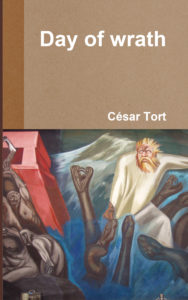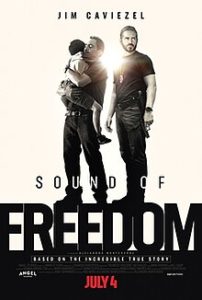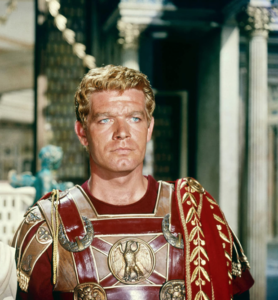As visitors to this site know, unlike what Kevin MacDonald says in The Culture of Critique (Frankfurt School, etc.), I believe that it is art for mass consumption that is central to making an x-ray of what’s wrong with the Aryan psyche. From this angle, as I have so often said, literary landmarks of the past such as Ivanhoe, Uncle Tom’s Cabin and Ben-Hur serve as x-rays for us to see the 19th-century soul of the white man. In our century as in the last century, it is the movies, and degenerate art, that can serve as X-rays.
 Breaking Bad is an American drama television series created and produced by Vince Gilligan, apparently a non-Jew. It tells the story of Walter White, a chemist. To pay for his cancer treatment and secure his family’s financial future, he begins cooking and selling methamphetamine, along with Jesse Pinkman, a former student of his. The series, set and produced in Albuquerque (New Mexico), is characterised by its desert settings and has been described as a sort of contemporary Western. The series premiered on 2008 and ended in 2013. Breaking Bad has been enthusiastically acclaimed by many critics and audiences, and is considered one of the best television series of all time. In 2013 it was one of the most watched cable television shows in the US, behind Game of Thrones.
Breaking Bad is an American drama television series created and produced by Vince Gilligan, apparently a non-Jew. It tells the story of Walter White, a chemist. To pay for his cancer treatment and secure his family’s financial future, he begins cooking and selling methamphetamine, along with Jesse Pinkman, a former student of his. The series, set and produced in Albuquerque (New Mexico), is characterised by its desert settings and has been described as a sort of contemporary Western. The series premiered on 2008 and ended in 2013. Breaking Bad has been enthusiastically acclaimed by many critics and audiences, and is considered one of the best television series of all time. In 2013 it was one of the most watched cable television shows in the US, behind Game of Thrones.
Unlike those for whom Breaking Bad has become almost a cult series, to the extent that Vince Gilligan filmed a sequel movie with the actor who portrayed Jesse Pinkman, I am repulsed by the series and want to expose it. (Remember I’m currently doing something similar with HBO’s House of the Dragon.) So here we go…
What disgusted me the most is that in several episodes Jesse inordinately loves a ‘Hispanic’ mother and her son, another mestizo. Walter and Jesse are capable of killing to survive in the underworld of drug trafficking, and yet they set Walt up as a good family man and Jesse as a good Samaritan to these ‘Hispanics’. It doesn’t even make sense to talk about the plot: this kind of thing wouldn’t be happening in the seventh art if Hitler, not Uncle Sam, had had access to the atomic bomb.
Jesse’s love for the spic family was what bothered me most about Breaking Bad, but there are other bad messages. Remember what Kenneth Clark says, that to understand a culture you have to look at its architecture? I have never been to New Mexico, but the total absence of inspiring monuments in the New Mexico filmed in Breaking Bad, and other US states, is striking to me. Aryan aesthetics are only seen in the interiors of the homes of middle- and upper-class people in Breaking Bad. But the visual message for someone used to contemplating what we’ve been seeing in our ‘European Beauty’ series is that of an empty American culture: the ideal platform for betraying one’s ethnicity and becoming a junkie.
Another thing that irritated me greatly about the series is that the roles of husband and wife are egalitarian. And I don’t just mean Walter and his wife but the latter’s sister and Walter’s brother-in-law, DEA agent Hank Schrader. An egalitarian marriage lends itself to inconceivable surrealisms and incongruities because of what Jamie, one of the commenters on this site, said and I picked up in On Beth’s Cute Tits:
I still remember my uncle mentioning something like this when I asked him for advice once: ‘If you are going to talk about serious matters, like killing someone or a coup, don’t ever let the women know about it’.
And I realised he is dam right, and so are you César.
Women will go hysterical at such things as planning a murder or a coup. They will most likely betray you and warn the authorities or government, which they believe is the strongest (expect this behaviour from very feminised men and homosexuals as well).
Dr. William Pierce once mentioned in one of his American Dissident Voices broadcasts that women, as a whole, do not understand abstract concepts such as honour and self-denial. It is not in their nature to understand. Security and comfort are their priorities, and so submission their way of getting it.
And the older I get, the more I realise how true that is. The empowering of women is truly a weapon of mass destruction.
Indeed. The wives in Breaking Bad don’t understand honour or self-denial (Walter, on the other hand, is the paradigm of the selfless man who seeks the good of his family). Another irritating thing is that Walter’s son is a hetero, albeit feminised handicapped man, to the extent that he betrays his father when the authorities realised that Walter was involved in illicit business. A true Aryan male doesn’t behave that way.
Another issue that irritated me is that the culture in which the characters move seems to have material comfort as its sole focus. One of the most abominable things I read in one of Isaac Asimov’s books, and it pains me but it is true, is that nowadays everyone in the West is working simply to live in more material comfort. (The true Aryan puts his race as the motive of his faith, his action and his wars, and the material aspect becomes secondary.)
Finally, this whole DEA (Drug Enforcement Administration) thing is aberrant. Walter’s illegal business only affected teenagers and adults, who voluntarily consumed methamphetamine. I’m not saying it’s right to sell drugs on the streets, but that’s infinitely less wrong than what psychiatry does legally. When abusive parents want to finish destroying one of their children, they turn to a third party: the psychiatrist. The first thing the psychiatrist does is hang an insulting label on the child (a pseudo-medical diagnosis) prior to involuntarily drugging him with drugs that induce a physical torment called akathisia (see my post on the subject here).
I have written a lot about psychiatry (see this summary). My point is that it is an act of astronomical hypocrisy to prosecute traffickers of illegal narcotics for adults and, at the same time, ignore the legal drugs that are used to torment defenceless children. Keep in mind that consuming illicit drugs is voluntary, and the drugging of the child with licit drugs is involuntary (insofar as the child doesn’t want to be tormented with akathisia). From this angle, all series like Breaking Bad do is reinforce the astronomically hypocritical narrative of the System. That’s why one of the few things I did like about the series is that Hank Schrader, the DEA agent, ends up with a bullet in his forehead.
In short, for a normie Breaking Bad is akin to taking methamphetamine, or rather, the soma drug from Brave New World. It is pop art that pulls us to the dark side, to continue to see ourselves through the prism of a System that wants to destroy us. The masses don’t read what the subversive Jews of the Frankfurt School write. The masses are being drugged with what Orwell called prole feed. The attitude a true Aryan should have is the opposite of the attitude of Counter-Currents, a supposed pro-white webzine that idealises Hollywood’s prolefeed.








